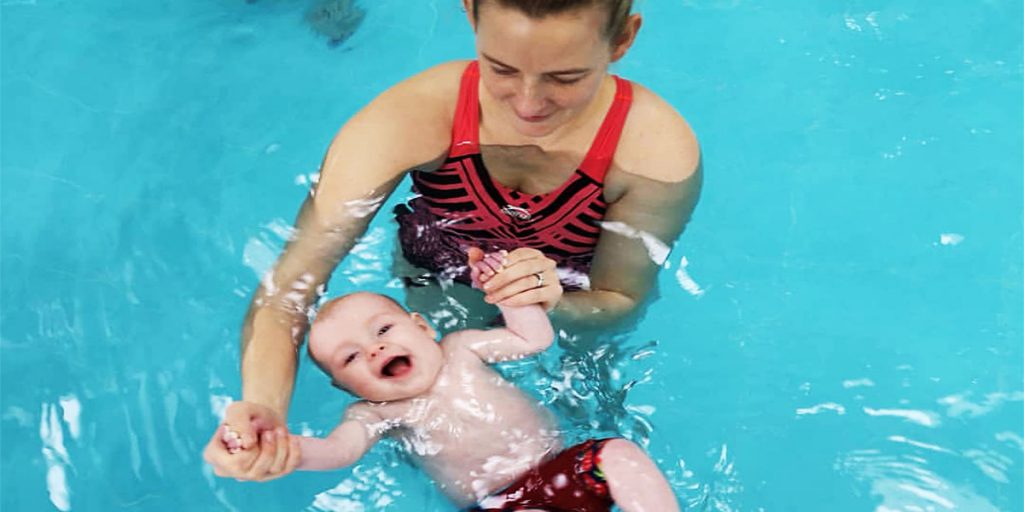Why Learning Back Float is The Key To Water Safety & Survival

You might have heard from your kids’ swimming lessons and every swimming lesson, instructors will start saying “1, 2, 3, and roll over to your back.” Following this, instructors will begin giving instructions to stay still while they are floating on their backs.
One thing we know about water is the unpredictability, and the circumstances it can arise without notice, we emphasize a lot on our students swimming and floating on their back for core floating is to ensure one’s survival in the water.
We all know mother nature can be extremely relentless, unforgiving at times, be it natural disasters, rainstorms, etc. However, there is another untold enemy that is right under our noses, silent and relentless, and many times go unnoticed. And yes, I am talking about the swimming pool, below your condo, public pool, or the one at your backyard.
Especially the ones found in the backyard, children often like to sneak out of the house unlocking backdoors, wandering onto the pool deck only to be captivated by the small pool that looks like a bathtub. Each year we have countless of many drownings all over the world.
Drowning and Danger
Kids can fall into the pool and drown within the next few seconds; our emphasis on teaching swimming is fundamental; water safety and survival skills. Our swimming program starts teaching water confidence, water acclimation, and practicing survival techniques floating on their back at the same time.
There are many reasons swimming instructors like to start off teaching students how to swim and float with their face facing the sky; this allows them to breathe. And improve their survival skills.
Often some instructors of even swim schools put this as their most essential fundamentals to learn during swimming lessons. Students who fail to master floating on their backs will not be able to qualify and moved to higher levels.
In our day to day conversations with the people, parents in general, we often discuss with them why there is a need to teach our students how to float first. One of the things I always keep mindful when sharing with parents or anyone is to keep them informed of the dangerous consequences panic can lead. This is especially so in a drastic situation where they are in a distressed body of water.
When the person starts to panic, they will begin to frail around uncontrollably. This leads to sinking and induces fatigue, which ends up increasing more of the likelihood that the person will no longer posses any more energy to swim up for safety.
Fatigue
No matter the depth of the swimming area, how deep, or how shallow, when the onset of the fatigue overtakes, they will usually lose the ability to retreat back to safety. The most important thing I will advise all my students to do in a situation like this is to start collecting your thoughts, continue to remain calm no matter how stressful it may be.
It does not take a lot of water for someone to drown; this maybe even more important when you find yourself in a body of water. Many countless situations in the past tell us it is always possible to have people found themselves in such stressful, perilous situations.
A seasoned swimmer can find themselves in a common situation where they have swim several laps, and now their body is fatigued — one of the most common results of fatigued muscles or leg cramps. When a person is swimming and experiences leg cramps, the first thing they do is react to the pain.
They may bend down and clutch their leg, or try to stretch their legs out, an action that results in them no longer having the ability to propel themselves through the water. In this circumstance, even the most seasoned swimmer can find themselves in a situation where drowning is a possibility.
We teach all students that the safest place in the pool is the wall because the wall never moves its constant, and it’s always in the same place.
When one finds themselves stuck in the middle of the pool, they know the next best action is moving on to the four sides and eventually swim to safety.
Survival Skill
And so what will happen when they are too fatigued, or the cramp is acting too strong a hindrance for them? If they are well-trained in back float skills, the next action they can take is to roll over on their backs, the core survival skill and technique learned will come into play.
When the student finds themselves on their backs, they can proceed to do three things; first, the student is able to breathe without any obstruction or difficulty. Second, by floating on their back, the student is able to yell out for help if they are unable to reach the wall or swim to safety.
And third, floating on their back in a still and static motion allows the student to regain their composure and rest so that they might regain the energy to then propel themselves towards safety.
Some people might find floating on the back simple, while some may take a longer time to hone this skill with many repetitions. As we all know, it is often the simplest things in life that have the greatest impact.
So the next time you and your loved ones find yourselves at the pool, lake, or beach always keep in the back your mind that if the situation ever arises and you find yourself in a stressful circumstance where you can no longer swim to safety or find security on a fixed object like a pool wall or a lake embankment.
Always remember to stay calm and compose yourself, proceed to roll over on your back staying motionless while breathing deeply in two regain your breath, and if you cannot swim to safety yell for help.
Of course, we hope that you will never get into such a stressful situation, but still keep in mind that having this survival skill could actually be a difference between your life and death.


